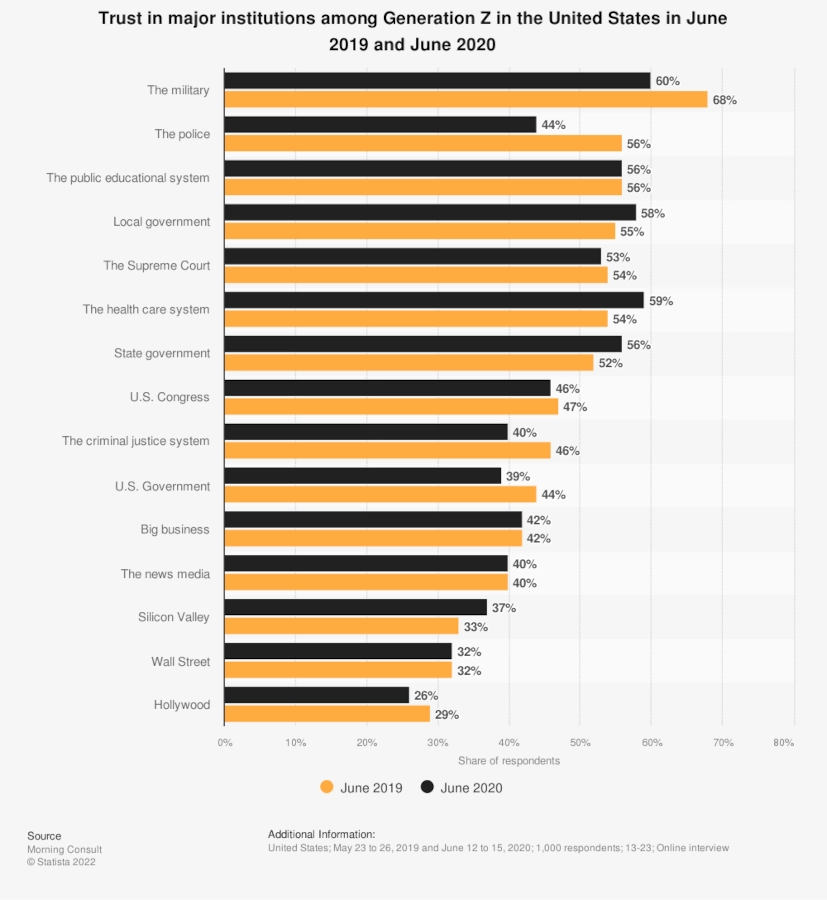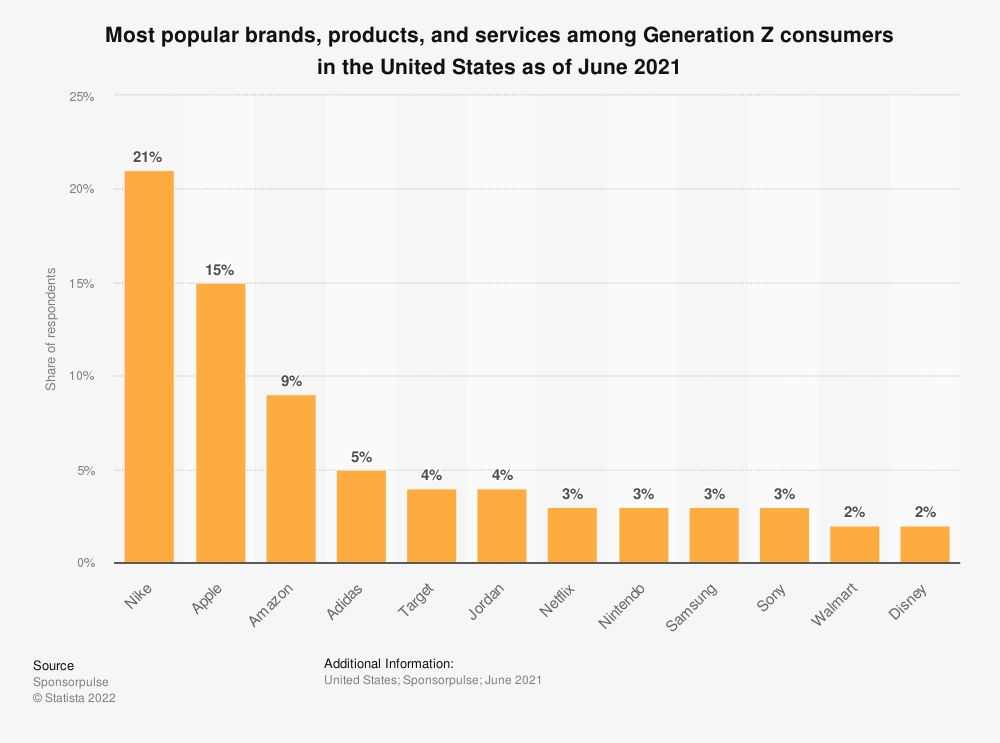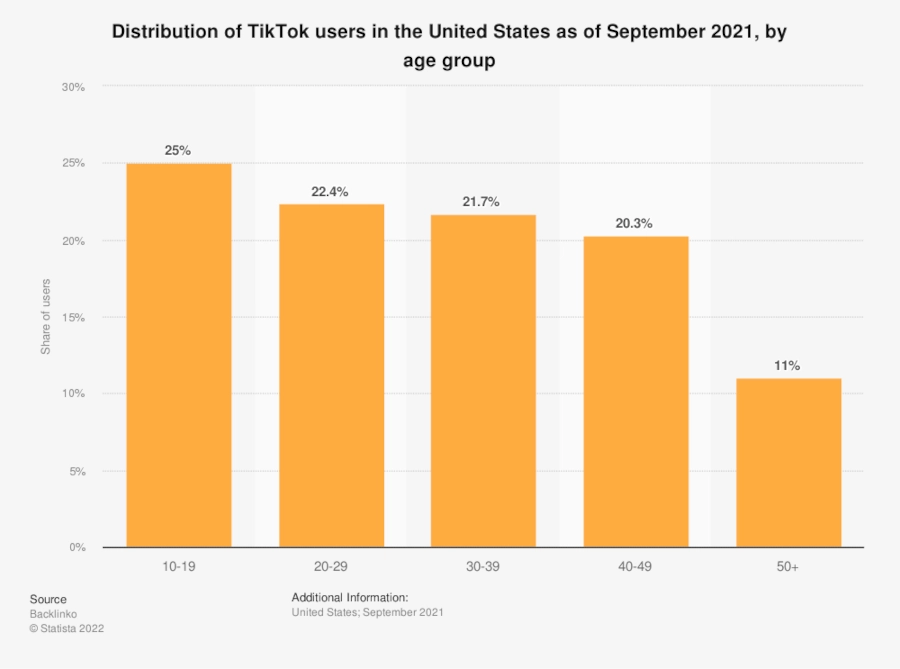Reading Time: 13 Minutes
Generation Z is taking social media by storm, both as the fastest-growing user base and next batch of authentic content creators–Gen Z influencers.
Generation Z, or Gen Z, is the youngest adult consumer generation to date. Born in the mid-90s just as the Internet became commonplace in the United States, these individuals share some resemblance to Millennials (Generation Y) but possess far greater tech skills.
Since the official year limit for Gen Z births is somewhere between 2007-2012, there is still a large number of Gen Z-ers that have yet to enter the workforce and boost an already-blossoming generation of new consumers.
Unlike their predecessors, Gen Z entered a world of widespread digitalization. Android’s first smartphone took the U.S. by storm before the oldest Gen Z-ers began middle school. In all likelihood, most of these consumers received smartphones as their very first tech “toy.”
Laptops, Google, Amazon, and Facebook were in “full swing” once Gen Z was old enough to use computers and mobile devices. This is the first generation to exist in a world where digital solutions impact nearly every aspect of life.
For this reason, marketers and economists refer to Gen Z as the first generation of digital natives.
“In the US, it is estimated that Gen Z has a direct spending power of US$29 billion-US$143 billion and an indirect spending power of US$600 billion.”
– Frost & Sullivan, Generation Z as Future Customers, Forecast to 2027
While $140 billion is less than what older generations spend, economists are astounded at such a high number considering the fact that only a portion of Gen Z-ers are wage-earning adults. In fact, experts anticipate Gen Z to be the largest consumer generation since the rise of Baby Boomers, both in population and buying power.
Since the 2008 recession, Gen Z-ers have increasingly distrusted “the establishment.” Those organizations for which the U.S.’s youngest generation has the least amount of trust are:

But Gen Z-ers are not completely without trust. More so than previous generations, they are more inclined to lean on the direction of:
The leading brands to capture Gen Z attention are those that focus on quality products and personalization. These brands include:

Marketers also recognize Gen Z as the “foodie” generation. More so than ever before, these young consumers are dining out extensively. Gen Z-ers love the eclectic culinary experience of ethnic, hybrid, and healthy dishes far more than their Millennial and Gen X parents.
As digital natives, Gen Z loves their technology. A significant portion of their spending will include computers, devices, streaming, and software. Media streaming is also a major ticket item for Gen Z-ers.
Having watched their parents struggle through the 2008 recession, Gen Z-ers are liberal spenders who value savings and smart buys.
They tend to prefer memorable experiences, as well as products/services that last. That’s why young spenders are investing heavily in vehicles, better-quality brands, and even starter homes.
The COVID-19 pandemic has also enhanced these Gen Z financial trends. These consumers are not afraid to spend, so long as they feel secure about their financial future.
To reach Gen Z, brands have to dig deeper, demonstrating transparency and authenticity at every opportunity. These marketing trends impact which strategies achieve the best results.
Gen Z-ers care very little about television and traditional ads. To connect with them, brands have to embrace social commerce and influencer marketing more than ever before.
This latest consumer generation cares deeply about reliable referrals, quality, and corporate social responsibility (CSR). Before Gen Z-ers spend, they will research brands and products online and pay attention when their favorite creators promote those brands and products.
The highest-performing content among Gen Z-ers is anything visual. That’s why Instagram, YouTube, and TikTok perform so well with users under thirty years old.
Marketers also believe that Gen Z’s love of short-form, vertical videos is primarily responsible for the rise of TikTok, along with IG Reels and YouTube Shorts.
Gen Z-ers prefer to interact with – rather than passively view – content on social media. That’s why they love influencers who demonstrate consistent authenticity.
Gen Z prefers to trust the word of thoughtful users and informed customers. They also crave credible information. Brands that know how to leverage customer advocates, online reviews, and informative social campaigns connect quickly with young audiences.
In an Axios survey, Gen Z-ers demonstrated unparalleled proficiency with social media platforms. They could investigate misinformation faster than other users, and they actively used social channels strategically to filter only reliable content relevant to their values.
These Gen Z trends force brands to be more transparent and socially responsible with their marketing initiatives.

Gen Z loves TikTok, perhaps more than any other channel online. Young TikTokers are leveraging the platform for comedy, dance, music, product endorsements, FAQs, social causes, and general entertainment.
“Gen Z is living with their mobile phones and these devices have inadvertently become an extension of themselves.”
– Marketing Dive, How to target Gen Z
Marketers are hard-pressed to meet any Gen Z-ers that remember pre-smartphone days. If a device doesn’t swipe or offer in-app functionality, they’re uninterested.
That’s why social commerce and omnichannel marketing is critical for brands as consumer spending shifts from older shoppers to Gen Z.
Gen Z cares deeply about social justice and equality. In fact, many Gen Z-ers intentionally boycott brands that refuse to make a difference on key political and social justice issues.
“Gen-Z expects the brands it supports to take a stand on social justice issues. Staying neutral out of a lack of vision or fear of offending some consumers is a failing strategy.”
Forbes, Five Undeniable Truths About Marketing To Gen-Z
@charlidamelio @avani @itssissysheridan dc @juucyj
♬ DC Juucyj – JJ WILLIAMS🥱
Charlie D’Amelio is arguably the first TikTok influencer to become globally famous. Today, she is active on all leading social channels, brand ambassador for Invisalign, and hosts her own show on Hulu.
@khaby.lame Did you get the point? 🤣🤣🤣#learnfromkhaby #learnwithtiktok #imparacontiktok #linkinbio
♬ suono originale – Khabane lame
Khaby Lame lives in Africa and generated TikTok buzz with his one-of-kind reaction videos. He is currently one of the fastest-growing creators in the history of influencer marketing. After achieving verified accounts on TikTok and Instagram, he launched an ecommerce shop where he sells various items with his name and face.
Addison Rae launched her TikTok with dancing and music videos. Now, she engages millions of fans across multiple platforms and hosts her own Netflix series, He’s All That.
JoJo Siwa starred with her mom in the show Dance Moms. Soon after, she released original singles and became particularly famous for the songs “Boomerang” and “Kid in a Candy Store.” She is active on Instagram, TikTok, and YouTube.
James Charles first became a YouTube sensation for makeup tutorials in 2015. He is CoverGirl’s very first male brand ambassador, and he has continued to grow his personal brand on YouTube and Instagram.
Bretman Rock is a comedic beauty and fashion influencer who began his career on Vine and now creates content on YouTube and Instagram. He is also an outspoken advocate for the LGBTQ community.
Emma Chamberlain began shooting and editing videos as a young teen. During her senior year, her parents let her launch her own YouTube channel. Today, she is Gen Z’s top lifestyle vlogger.
Matthew David Morris, or MattyBRaps, is a famous Gen Z musician who leveraged social media to grow his fan base. He operates primarily out of YouTube where he posts his latest singles and music videos.
Brooklyn and Bailey are twins who have their mom to thank for their introduction to social media. Mindy McKnight included her daughters in her channel, “Cute Girls Hairstyles.” The twins developed their own brand over time and now manage their social media brands together.
@wisdm8 Reply to @dripis5ever I made sure to put the brands this time 😎
♬ original sound – Wisdom Kaye
Wisdom Kaye posted his first TikTok in 2020 and is one the top Gen Z fashion influencers on TikTok. He has been dubbed the “best dressed guy on TikTok” by Vogue Magazine.
If your brand is targeting a young adult demographic, partnering with Gen Z influencers is your next best move. These creators are some of the most skilled smartphone users online which allows them to post frequent, quality content.
Gen Z consumers take their favorite influencers seriously. And authentic product endorsements from these Gen Z influencers can help brands scale at a rapid pace.
Learn more about influencer marketing: Influencer Marketing 101
Our team keeps a finger on the pulse, so you’re always working with the latest information.